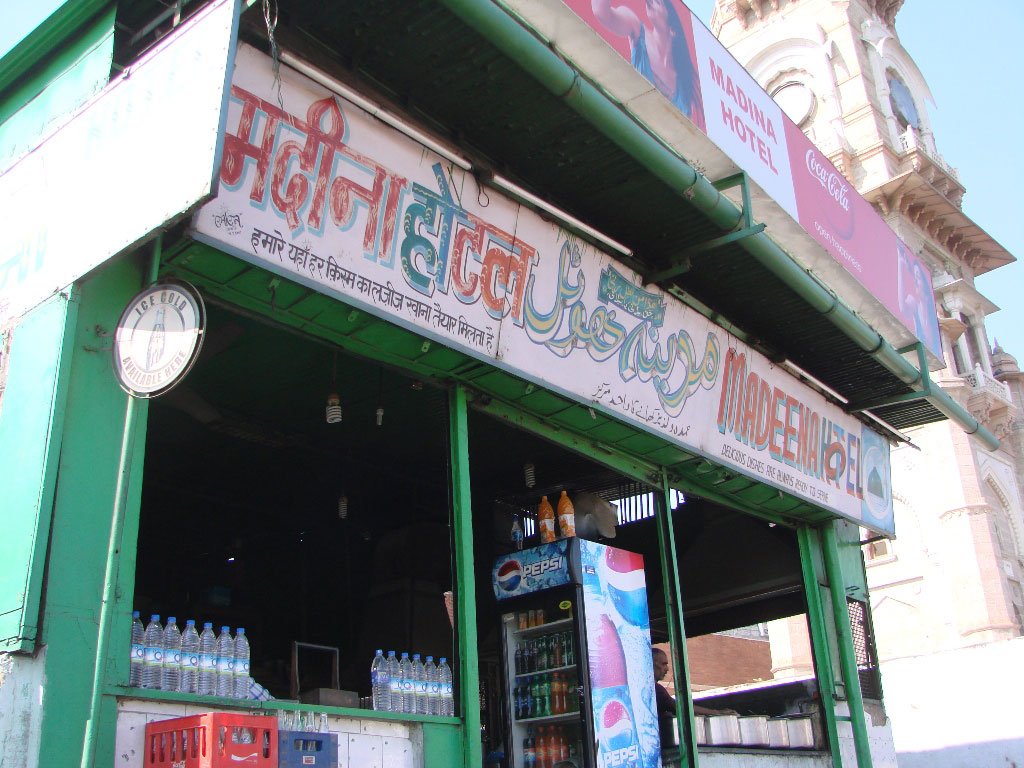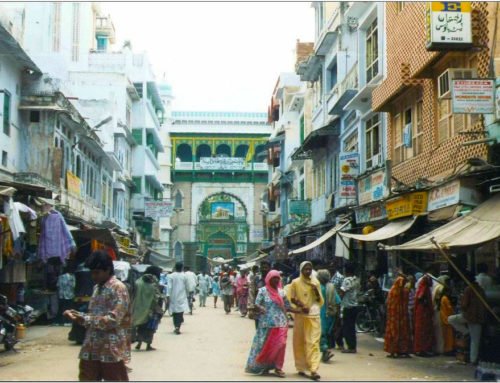Overview
- Signature Dishes: Mughlai chicken
- Opening Times & Days: 9am to 11pm, daily
- Address: Opposite Ajmer railway station, Jaipur Road, Ajmer, Rajasthan, India
- Contact: N/A
- Reservation: No
Author Reviews[display_rating_item_results rating_form_id=”3″ rating_entry_ids=”1″ show_category_filter=”false” show_options=”true” result_type=”star_rating” preserve_max_rating=”true” show_title=”false” show_count=”false” ]
Total Rating: [display_rating_result rating_form_id=”3″ show_count=”false” show_rich_snippets=true] [accordions load=”1″] [accordion title=”User Reviews” last] [display_rating_item_results rating_form_id=”5″ show_options=”true” result_type=”star_rating” preserve_max_rating=”true” show_title=”false” show_count=”true” show_rich_snippets=true] [/accordion] [accordion title=”Add Review”][display_rating_form show_email_input=”true” show_comment_textarea=”true” show_name_input=”true” rating_form_id=”5″] [/accordion] [/accordions]
Summary
If you’re in search of good non-vegetarian food after being in the strictly vegetarian town of Pushkar, look no further. Madina Hotel, in Ajmer, does delicious non-vegetarian dishes at very affordable prices. It’s also a great place to have a meal while you wait for a train at the Ajmer railway station opposite the road. Try their Mughlai chicken with tandoori rotis which is the best by far.
Ajmer Restaurant: Madina Hotel
After spending a couple of days in the strict vegetarian city of Pushkar, Madina Hotel in Ajmer was a godsend. On our way from Pushkar to Ajmer railway station, we decided to stop here for lunch. This was one of the best decisions we made in India.
Madina Hotel is a ‘no frills’ restaurant that opens out into the street in front of the Ajmer railway station situated opposite the road. The street is always busy with traffic, and people coming and going from the railway station. However, once we walked into the restaurant, the chaos of Ajmer was left behind.
They serve both vegetarian and non-vegetarian meals, however, they specialise in non-vegetarian Mughlai dishes.
The decor in this restaurant is non-existent. People come here for one thing – good food at affordable prices. Long tables and benches take up most of the space in the restaurant, and there is hardly any room to move. They are set up for large crowds of people.
The kitchen is open plan, so we could see the activities in there, as well as the hygiene standards. Everything looked clean enough, although we didn’t look too closely just in case we saw something we didn’t want to see.
[singlepic id=3487 w=720 h=560 float=center]
For lunch, we ordered the specialty of the house – Chicken Mughlai – and Chicken Biryani with Tandoori Rotis.
The service here was surprisingly good. The waiter answered all our questions about the dishes. I should clarify here that I spoke to him in Hindi as his English was very poor. He kept returning to our table to ask us if we liked our meals, and whether we wanted anything else. He was friendly, efficient and courteous which was very refreshing.
The food was cooked and served very quickly, so we didn’t have to wait at all. The kitchen staff were friendly as well, and smiled at us before we left the restaurant.
[singlepic id=3489 w=720 h=560 float=center]
Mughlai Chicken, the specialty of the restaurant, is a Persian dish brought to India by the Mughals. It is rich, creamy and flavored with aromatic whole spices, fruits and nuts. It also happens to be my favourite Indian cuisine.
The Mughals contributed to India’s rich history not only in the form of architectural buildings, but also greatly in food. Since Mughals were Persians, their cooks adapted from the best of both worlds, whole and ground Indian spices, and the rich creamy nuttiness from dry fruits reminiscent of Persian cuisine. The cooks were instructed to use the best of ingredients, which came from different regions of the country. Colleen Taylor Sen in his book, Food Culture of India even states that the chickens were fed pellets flavored with rosewater and saffron, and massaged with musk oil and sandalwood every day until they were considered fragrant and fat enough to be served to the kings.
This dish was by far the best dish in this restaurant. It was a big piece of chicken which was beautifully cooked. The meat was moist and was falling off the bone. The sauce was thick, while the flavour had a lot of depth due to the mixture of herbs, spices, fruits and nuts that made up the sauce. Graham didn’t like the texture as much as he thought the sauce contained too much egg. The dish was a bit on the oily side, so we had to deftly pick out the chicken pieces and gravy without picking up the oil.
[singlepic id=3491 w=720 h=560 float=center]
Chicken Biryani is another Mughlai dish contributed by the Persians to Indian cuisine. The word ‘biryani’ comes from a Persian word beryā(n) meaning fried or roasted. It originated in Turkey and was brought to India by Muslim travellers and merchants. It was one of the most famous dishes in the kitchen of the Mughal emperors. Biryani was traditionally prepared in earthenware pots, and is known for its unique aroma, flavour and spices.
Unfortunately, the chicken biryani here didn’t have anything special about it. Compared to the Mughlai chicken, it was mediocre as it lacked the depth of flavour and richness a biryani ought to have. While the chicken was plenty and beautifully cooked, with the meat falling off the bone, the rice wasn’t the typical biryani rice (thin, long grain and very aromatic). Instead, it was thick and heavy, and didn’t have much flavour infused into it. It lacked spices, especially saffron, which gives the rice a lovely aroma and delicate flavour which defines a biryani.
[singlepic id=3488 w=720 h=560 float=center]
On our return to Pushkar, via Ajmer, a few days later, to visit the Pushkar Camel Fair, we stopped at Madina Hotel for lunch once again. On our previous visit, we had loved their Mughlai chicken so much that we decided to try their Mughlai mutton this time.
The Mughlai Mutton was no where near as delicious as the chicken variation. The mutton was bony and didn’t have much meat in the dish. I should clarify here that this has more to do with mutton in India than the dish itself. Whenever we ate a mutton dish in India, we found the meal to have more bones than meat to it. Nevertheless, mutton, as a meat, doesn’t go well with Mughlai sauce, as both the meat and sauce have very strong individual flavours, and the mutton overpowers the flavour of the sauce. Chicken, on the other hand, being more delicate in flavour, works well with the Mughlai sauce.
The other reason for our return to Madina Hotel is the value of their non-vegetarian dishes. A non-vegetarian meal at this restaurant costs about Rs 120 for a full plate, and Rs 80 for a half plate. The quantity of meat in each dish was also very generous. Most restaurants we ate at in India charged this price for a vegetarian dish, while others who charged this price for a non-vegetarian meal provided very little meat in their dish.
Returning to Madina Hotel a second time is testimony to our love for their food, especially the Mughlai chicken. It goes down in our books as one of the best dishes we had in India. Moreover, the value for our meals at this restaurant was one of the best in India, given that all our dishes were non-vegetarian and had a decent serving of meat to it.
If you’re not too fussed about decor or seating arrangements, definitely visit Madina Hotel the next time you’re in Ajmer.




